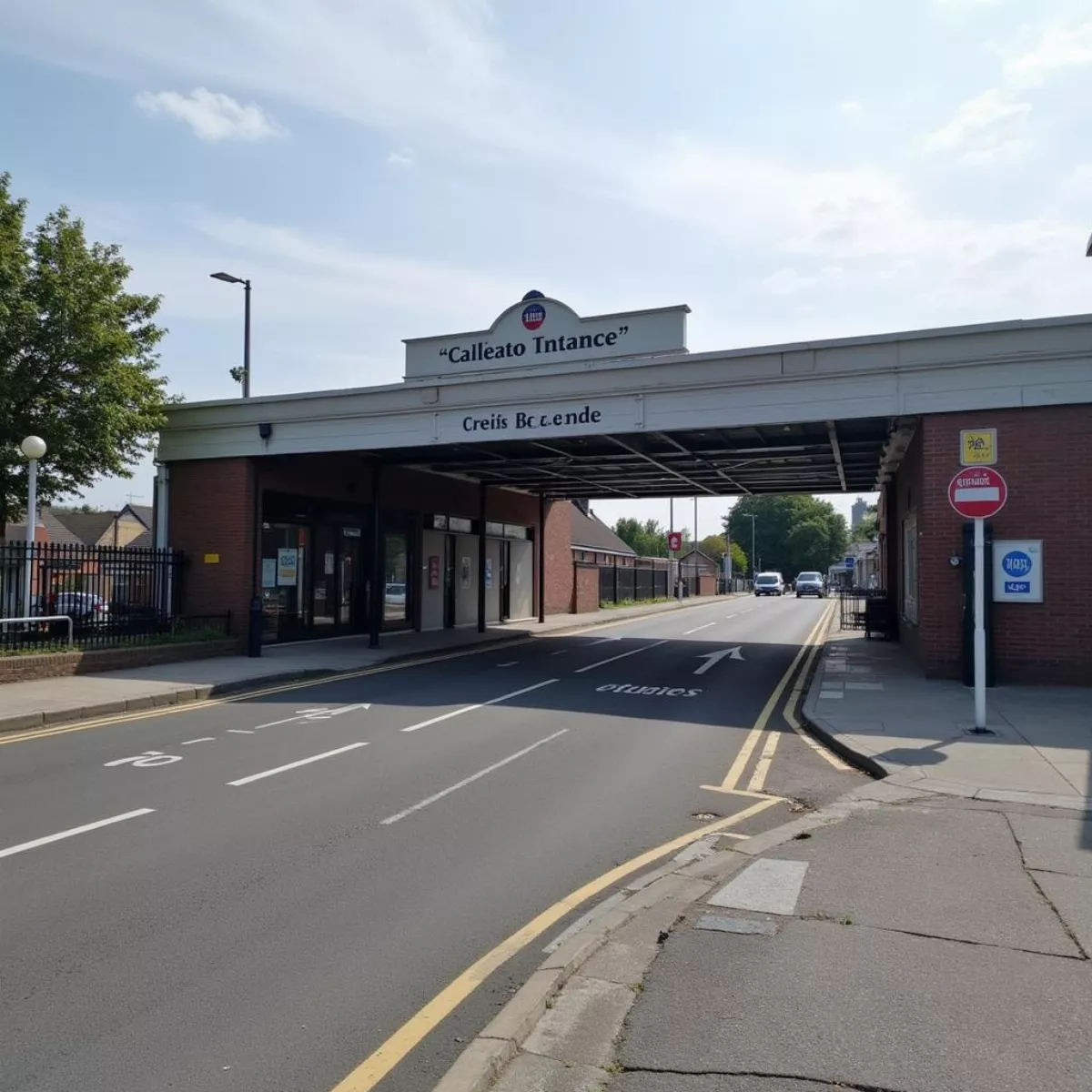Walton Heath Golf Club is one of the finest golf clubs in the UK, nestled in the scenic Surrey countryside. Known for its historic significance and pristine courses, it attracts golfers from all over. Whether you’re planning a day on the green or attending a special event, figuring out how to get to Walton Heath Golf Club can seem tricky. Don’t worry! This guide will walk you through everything you need to know about the best transport options, directions, and tips for your journey.
Why Walton Heath Golf Club is Worth Visiting
Before we dive into logistics, let’s briefly touch on why Walton Heath Golf Club is a bucket list destination for golf lovers:
- Rich History: Established in 1903, the club has hosted numerous prestigious events including the Ryder Cup.
- Exceptional Courses: The club features two stunning courses – the Old Course and the New Course, each with its unique challenges.
- Stunning Scenery: Set on heathland, the courses boast breathtaking views and a natural layout that enhances the golfing experience.
 Walton Heath Golf Course overview
Walton Heath Golf Course overview
Getting to Walton Heath Golf Club
1. By Car
Driving is one of the most convenient ways to reach Walton Heath Golf Club. Here’s how you can get there:
- From London:
- Take the M25 motorway.
- Exit at Junction 9 toward Leatherhead.
- Follow the signs for A245 and then B2033 to Walton Heath.
- The golf club will be clearly signposted from the main roads.
- From Gatwick Airport:
- Head northwest on the M23.
- Merge onto the M25.
- Follow the same route as above.
- Notes:
- The club offers ample parking for visitors.
2. By Train
If you prefer public transport, trains are an excellent option:
- Nearest Train Stations:
- Earlswood Station is the closest, about 1.5 miles from the club.
- Reigate Station and Tattenham Corner Station are also nearby.
- From London:
- Take a Southern train from London Victoria to Earlswood (approximately 45 minutes).
- From Gatwick:
- Take a Southern train to East Croydon, then transfer to the train heading to Earlswood.
- Taxi or Walk:
- From Earlswood, you can take a short taxi ride or enjoy a lovely walk to the club.
 Earlswood Train Station Entrance
Earlswood Train Station Entrance
3. By Bus
Buses are another way to arrive:
- Frequent services run from towns like Reigate and Redhill.
- The 604 bus travels to Walton Heath, stopping near the golf club entrance.
4. Ridesharing
If you want a hassle-free experience, consider using rideshare services like Uber or Lyft. Just input Walton Heath Golf Club as your destination, and you’re good to go!
Map Directions
To visualize your journey, here’s a simple road map you can use:
| Route | Time (approx.) | Distance |
|---|---|---|
| From London via M25 | 1 hour | 30 miles |
| From Gatwick Airport | 30 minutes | 10 miles |
| From Earlswood Station (Taxi) | 5 minutes | 1.5 miles |
 Map Directions to Walton Heath Golf Club
Map Directions to Walton Heath Golf Club
Tips for Your Journey
- Plan Ahead: Check your transport schedules in advance, especially for trains and buses.
- Travel During Off-Peak Hours: To avoid traffic, try to travel outside of peak hours.
- Dress for Golf: Depending on the season, ensure you have appropriate golf attire to follow club rules.
Key Takeaways
- Driving is the most convenient option, especially from London and Gatwick Airport.
- Trains are an efficient way to reach the club, particularly from London.
- For a hassle-free journey, consider using rideshare services.
- Always plan your travel route ahead of time to avoid stress.
FAQ Section
1. What is the address of Walton Heath Golf Club?
Answer: Walton Heath Golf Club, Walton Heath, Tadworth, Surrey, KT20 5LP, England.
2. What are the club hours?
Answer: The club is generally open from 7 AM to 7 PM, but check their website for specific hours, especially on holidays.
3. Are there facilities for non-members?
Answer: Yes, visitors can enjoy the club as guests of members, and there are also special event days open to non-members.
4. Is public transport reliable?
Answer: Yes, public transport is frequent, but checking timetables ahead of your plan is always advisable.
5. Can I rent golf clubs at Walton Heath?
Answer: Yes, the club does offer club rentals. It’s best to confirm in advance to ensure availability.
6. Is there a dress code?
Answer: Walton Heath has a dress code; generally, smart casual is expected on the premises.
7. How do I book a tee time?
Answer: Tee times can be booked via the club’s official website or by calling the clubhouse.
8. What should I bring for a day of golfing?
Answer: Bring your golf clubs, appropriate attire, plenty of water, and sunscreen.
 Essential Golf Equipment Checklist
Essential Golf Equipment Checklist
9. Are there on-site restaurants available?
Answer: Yes, Walton Heath offers dining options with a choice of snacks and full meals.
10. Are there accommodation options nearby?
Answer: Yes, there are several hotels and guest homes within a short drive of the golf club.
By following this guide, you’ll be well-prepared for your visit to Walton Heath Golf Club. Whether you’re a seasoned golfer or just looking to enjoy the serene environment, this iconic club promises a memorable experience. Now, grab your clubs and enjoy the lush fairways of Walton Heath! Happy golfing!

 Arriving at Fishers Island by Ferry
Arriving at Fishers Island by Ferry Sunset on a Fishers Island Beach
Sunset on a Fishers Island Beach
 Scenic view of Seven Canyons golf course with red rock formations
Scenic view of Seven Canyons golf course with red rock formations Hikers on Cathedral Rock trail overlooking Sedona's red rock landscape
Hikers on Cathedral Rock trail overlooking Sedona's red rock landscape Panoramic view of Sedona's red rock landscape at sunset
Panoramic view of Sedona's red rock landscape at sunset
 Mizuno JPX 921 Forged Irons Set
Mizuno JPX 921 Forged Irons Set Golf Club Lie Angle
Golf Club Lie Angle
 Heceta Head Lighthouse on a Clear Day
Heceta Head Lighthouse on a Clear Day Golfing at Bandon Dunes with Ocean View
Golfing at Bandon Dunes with Ocean View
 Athlete Practicing Deep Breathing Exercises
Athlete Practicing Deep Breathing Exercises Athlete Consulting Sports Psychologist
Athlete Consulting Sports Psychologist Athlete Using NLP Techniques for Performance Enhancement
Athlete Using NLP Techniques for Performance Enhancement
 College golfer sending email
College golfer sending email Student-athlete studying
Student-athlete studying
 Baseball player visualizing success in the dugout
Baseball player visualizing success in the dugout Baseball player doing breathing exercises
Baseball player doing breathing exercises
 Golf Course with Lush Fairway and Sand Trap
Golf Course with Lush Fairway and Sand Trap Golfers Enjoying Drinks at Clubhouse Patio
Golfers Enjoying Drinks at Clubhouse Patio
 Ping Irons Comparison Table
Ping Irons Comparison Table Professional Club Fitting Session
Professional Club Fitting Session